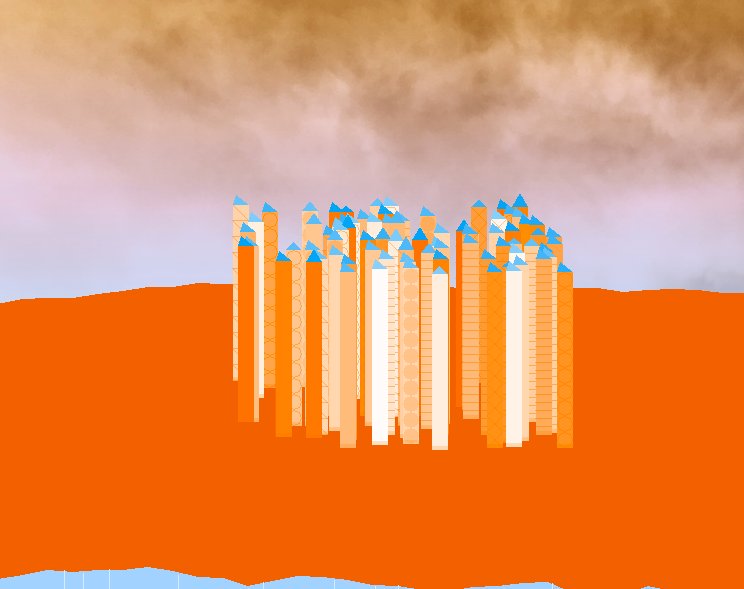Pop-Up City / 2017 / as part of Matheson Marcault
Pop-Up City is a game we made to run on the Ellipse at the Museum of London, for one night only.
The Ellipse is a huge screen that wraps around a whole room, a grid of 48,000 LEDs suspended around a central atrium, a widespread screen measuring 1200 pixels wide and only 40 high. It surrounds you; it’s impossible to see the whole thing at once.
The game was part of an evening about cities and play as part of the City Now City Future season, and we made a city building game to fit, something designed to be played in only 20 seconds. Players press six big buttons to make a semi-random change to a static image of a city – changing the buildings, the landscape, the weather, the lighting, and making the buildings taller or shorter. (Make them tall enough, and entirely new buildings spring out of the ground to create a particularly dense cityscape. Lower them and keep lowering, and they’ll disappear beneath the ground, leaving only an empty landscape).
Some example cities
Each time you press a button, a countdown ticks down from ten; when you hit zero, the city you’ve built with your choices animates briefly. Perhaps birds move, or rain falls, or snow accumulates on rooftops; or the sun goes down, or the moon crosses the screen, or words scroll. And then everything fades to black and it’s time to build another city.
Following the event, the Museum of London asked us to make a purely digital version of the game to host on their website: a tiny city-building tool with just a few ways to transform it, but many different cities emerging from those parameters.
A writeup of the design process is on the Matheson Marcault website, and the online version of the game is on the Museum of London website.






